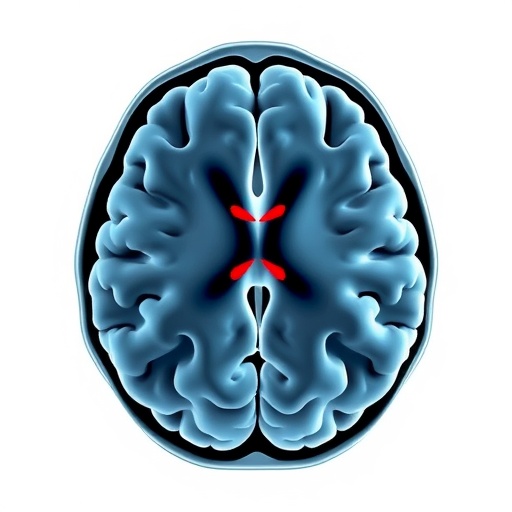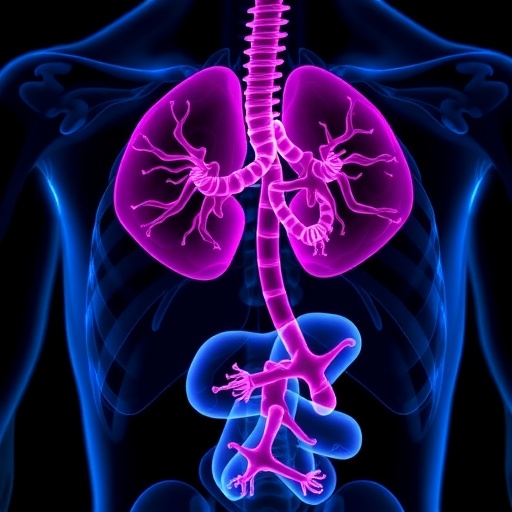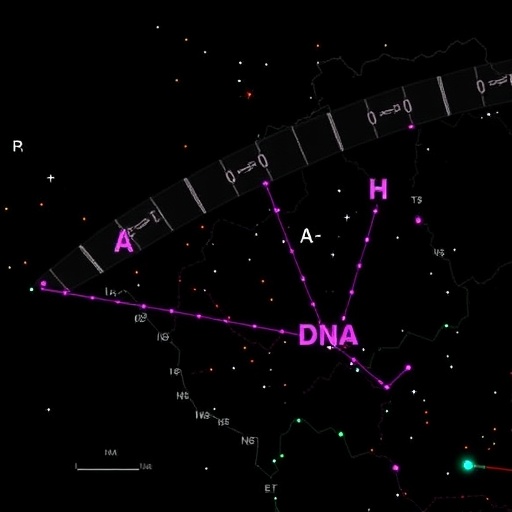In a groundbreaking development that has captured the attention of the oncology community, recent findings from the NRG-BN001 trial’s proton cohort have illuminated promising new avenues in the treatment of glioblastoma (GBM). This Phase II randomized signal-seeking trial, initially designed to evaluate radiation dose intensification with photon therapy, had earlier revealed that escalating photon doses to 75 Gy failed to yield a significant survival benefit. However, the latest data emerging from the proton therapy arm of the study marks a significant departure from these findings, revealing an encouraging improvement in overall survival (OS) among patients receiving proton therapy at the intensified dose of 75 Gy.
The significance of these results cannot be overstated, as they have not only met but exceeded the predefined threshold for survival improvement set by the trial design. This milestone paves the way for launching a definitive Phase III randomized trial aimed at conclusively determining the therapeutic advantage offered by proton dose-escalation in newly diagnosed GBM patients. The results were formally presented at the prestigious American Society for Radiation Oncology (ASTRO) Annual Meeting held in San Francisco, further highlighting their importance to the wider medical research community.
Dr. Minesh P. Mehta, a leading figure at the Baptist Health Miami Cancer Institute and Florida International University’s Herbert Wertheim College of Medicine, and the principal investigator of the NRG-BN001 study, elaborated on the dual rationale behind this innovative trial approach. The team hypothesized that proton therapy’s inherent physical characteristics could permit safe dose escalation beyond the conventional standard of care by enhancing tumoricidal effects while simultaneously mitigating radiation exposure to circulating lymphocytes. Preservation of lymphocyte populations is critical, as these immune cells underlie the anti-tumor response essential for durable disease control.
The genesis of this trial can be traced back to multiple single-arm, non-randomized studies that had previously established the safety and potential efficacy of simultaneous integrated boost (SIB) radiation therapy delivering 75 Gy in conjunction with temozolomide chemotherapy. Despite the promise shown in these earlier studies, definitive evidence from randomized controlled trials was lacking, a gap that NRG-BN001 was specifically designed to address. Importantly, lymphopenia—frequently observed during photon-based radiation—has been implicated as a negative prognostic factor due to its dose-volume dependency and adverse influence on survival outcomes in GBM. Proton therapy’s ability to spare normal tissues from unnecessary radiation may thus serve a dual role, combining dose escalation benefits with immunologic preservation.
The trial enrolled 193 evaluable patients in the proton therapy arm, offering a robust sample size to assess clinical outcomes rigorously. Analysis revealed a hazard ratio (HR) for death of 0.81 favoring the proton arm, with a 70% confidence interval spanning 0.67 to 0.98, and a p-value of 0.11—significant given the prespecified Type I error rate of 0.15 for this signal-seeking design. When adjustments were made for biomarkers such as MGMT promoter methylation status and recursive partitioning analysis (RPA) classification, the survival advantage remained statistically significant, underscoring the robustness of the findings.
At the two-year survival mark, the absolute benefit of proton therapy compared to the control arm was 6.8%, translating to survival rates of 49.9% versus 43.1%, respectively. At three years, the proton arm maintained a notable 4.6% absolute advantage (30% vs. 25.4%). These figures are particularly compelling given the notoriously poor prognosis associated with GBM and the historically limited progress in improving long-term outcomes. Stratification analyses further demonstrated that both MGMT methylated tumors and patients with lower RPA classes derived superior OS benefits with proton therapy, with no significant interaction effects indicating that these factors did not modify the treatment response.
Safety profiles are a critical metric in evaluating the feasibility of dose intensification regimens. In this study, rates of high-grade toxicities were comparable between treatment groups. Notably, Grade 3 or higher lymphopenia occurred in 17.1% of patients receiving 75 Gy proton therapy versus 23.4% in the 60 Gy photon cohort, suggesting a meaningful reduction in immunosuppressive side effects. Moreover, severe neurologic toxicities (Grade 4 or above) were also lower in the proton group (1.8% vs. 5%), reinforcing the potential for improved tolerability alongside efficacy gains.
The biological basis underlying these clinical outcomes is rooted in the distinct physical and dosimetric properties of proton therapy. Protons exhibit a characteristic Bragg peak, which enables the delivery of high radiation doses confined to tumor volumes with minimal exit dose beyond the target. This precise energy deposition pattern reduces incidental irradiation of surrounding normal tissues, including critical immune organs and circulating lymphocytes, thereby improving the therapeutic ratio. Preservation of systemic immune competence during treatment may synergize with temozolomide-induced cytotoxicity and intrinsic anti-tumor immunity to enhance patient survival.
While the Phase II results are encouraging, the oncology field must await confirmation through larger, definitive Phase III trials designed to validate the survival benefit and confirm safety in a broader patient population. The NRG-BN001 proton cohort data provide a compelling rationale to justify such investment in further clinical investigation, potentially transforming standard care paradigms for GBM. Given the dismal outcomes historically linked to this aggressive glial malignancy, innovations that safely intensify local control while maintaining systemic immune function are particularly warranted.
This trial also highlights the evolving landscape of radiation oncology, where advanced technologies such as intensity-modulated proton therapy (IMPT) enable more precise treatment delivery. As these modalities become increasingly accessible, the integration of molecular and imaging biomarkers may further tailor therapy to individual patient tumor biology and immune status in a precision medicine framework.
Funding for the research underpinning these advancements was generously supported by multiple National Cancer Institute awards, including U10CA180868 (NRG Oncology Operations) and other supplemental grants, emphasizing the vital role of federally sponsored clinical trials infrastructure in driving cancer care innovation. The results were presented during the Plenary Session at ASTRO 2025, underscoring the scientific community’s recognition of the study’s potential impact.
In sum, the NRG-BN001 trial’s proton therapy arm has shed light on an auspicious strategy to improve outcomes in newly diagnosed GBM patients through dose intensification coupled with immune preservation. These findings mark a pivotal step forward, offering hope for enhanced survival in a patient population long constrained by limited therapeutic options. The oncology world eagerly anticipates subsequent Phase III confirmatory trials that could cement proton therapy’s role as a new cornerstone in GBM management.
Subject of Research: Proton versus photon radiation dose intensification in newly diagnosed glioblastoma (GBM) treatment
Article Title: Signal-Seeking Phase II Randomized Trial of Proton or IMRT Dose Intensification in GBM: NRG BN001
News Publication Date: September-October 2025
Web References:
NRG Oncology Podcast: https://www.nrgoncology.org/Podcast
ASTRO Annual Meeting 2025
References:
Mehta MP, Pugh SL, Mahajan A, Shih HA, Tsien CI, Chenevert TL, et al. Signal-Seeking Phase II Randomized Trial of Proton or IMRT Dose Intensification in GBM: NRG BN001. Presented at the ASTRO Annual Meeting, San Francisco, CA, 2025.
Keywords:
Glioblastoma, Proton Therapy, Radiation Dose Escalation, Temozolomide, Overall Survival, Lymphopenia, Intensity-Modulated Radiation Therapy (IMRT), Phase II Clinical Trial, NRG Oncology, Immunotherapy, Brain Cancer, Radiation Toxicity
Tags: ASCO 2023 conference highlightsglioblastoma patient outcomesglioblastoma treatment advancementsinnovative cancer treatment strategiesnew therapies for brain cancerNRG Oncology trial findingsoncology research breakthroughsoverall survival improvement glioblastomaPhase III clinical trials in oncologyproton dose-escalation benefitsproton therapy for brain tumorsradiation dose escalation therapy





